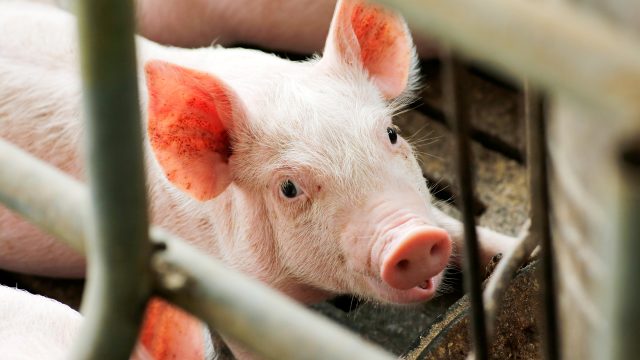
Animal Hoarding Facts
What is animal hoarding?
Hoarding is one of the most egregious forms of animal cruelty, affecting tens of thousands of animals – mostly cats and dogs – in communities nationwide. Hoarders keep abnormally large numbers of animals for whom they do not provide even the most basic care.
Animal victims of hoarders typically suffer horribly as a result, and, unlike most other forms of companion animal cruelty, their misery can go on for years. The sometimes hundreds of dog or cat victims of a single hoarder generally show signs of abuse such as severe malnutrition, untreated medical conditions including open sores, cancers, and advanced dental and eye diseases, and severe psychological distress.
How serious is the problem?
It is likely that up to a quarter million animals – 250,000 per year – are victims of hoarders. Recently, the number of reported hoarding cases has steadily increased.
In terms of the number of animals affected and the degree and duration of their suffering, hoarding is the number one animal cruelty crisis facing companion animals in communities throughout the country. Hoarding frequently endangers the health, safety and life of the hoarder as well as children and dependent adults who must live under the same conditions.
Who hoards animals and why?
As with other acts of animal cruelty, it may be impossible to know for sure what motivates the abuse and profound neglect inflicted by hoarders. We do know that 72% of hoarders are women and that the most common animal victims of hoarders are cats, followed by dogs.
Because recidivism rates for hoarders are almost 100%, the only long-term solution for stopping their behavior is to prevent them from owning animals, and to require mental health evaluations and treatment if necessary.
How does animal hoarding affect the local community?
In addition to the horrific animal cruelty involved, hoarding creates such highly unsanitary conditions that the properties of hoarders, contaminated with fecal matter and urine, may be condemned.
What’s more, a single hoarding case involving dozens if not hundreds of animals can easily bankrupt a local humane society or shelter, and severely strain volunteer resources, and the cost to local authorities and law enforcement officials remains ongoing.
What can be done from a legal standpoint to stop or prevent hoarding?
Hoarding is very difficult to prevent, but it may be addressed by holding the hoarder accountable.
There is a need for public education and for communities to know how to recognize the basic signs of hoarding: the keeping of abnormally large numbers of animals, the failure to provide proper nutrition, care, and a sanitary environment accompanied by evidence of serious neglect.
In the short term, neglected and abused animals need to be removed from a hoarder’s property, but only long term changes to animal law can address hoarding situations.
Animal Legal Defense Fund recommends:
- Civil Options for Stopping Animal Hoarders
Concerned members of the public should consider a civil right of action to initiate a case against a hoarder. In most states, a prosecutor must be the one to bring charges against animal hoarders for committing acts of cruelty to animals. Provisions like North Carolina’s 19A Statute, which the Animal Legal Defense Fund used in the unprecedented ALDF v. Woodley case in Sanford, N.C., allow any private citizen or organization to bring civil charges against abusers for violating animal cruelty laws.A similar solution is for states to enact a statute declaring animal cruelty as an abatable nuisance. The Animal Legal Defense Fund succeeded in passing such a statute in Oregon in 2015, which can serve as a model for other states.
- Cost Mitigation Laws
Taxpayers should not pay the cost of caring for animals rescued from criminal abusers. Because hoarding cases often involve hundreds of animals, the expense of providing food, housing, and veterinary care for animals seized from a hoarder can easily cripple a local humane society or animal control agency. We need cost mitigation provisions to ensure that the hoarder, rather than the local taxpayer, must pay for the costs of caring for those animals while the animals are in the custody of a local shelter after seizure. - Sentencing including Mandatory Forfeiture
Hoarders have clearly demonstrated they are a serious threat to the well-being of animals entrusted to their care. Their rights to all of their animal victims should be forfeited upon conviction, thereby allowing these victims a chance at a better life in a new, loving home. Additionally, because statistics demonstrate that the vast majority of hoarders will recommit similar crimes in the future if given the opportunity, convicted hoarders should be barred from owning, possessing, or having any direct contact with animals.Sentencing provisions for hoarders should also include a mental health evaluation, and treatment if necessary.
Why is animal hoarding so difficult to prosecute?
There is often a mental health component in an animal hoarding case causing some communities to divert the hoarder from the criminal justice systems; however the criminal justice system can be a tool for addressing these very issues.
Courts can–and should–require convicted animal hoarders to undergo mental health evaluations, and treatment if necessary. This can address the root of the issue, dramatically reducing recidivism rates. It is important to do this through the criminal justice system, so that the court has the authority to enforce a future possession ban, and impose sanctions for failure to comply.
Furthermore, many states have heightened penalties for second or subsequent animal cruelty crimes. If a hoarding case is diverted out of the criminal system, there would be no way to apply these laws if the hoarder commits further animal cruelty.
Other reasons that animal hoarding cases are difficult to prosecute are that: most states have no legal definition for animal hoarding, courts already assign relatively low priority to animal abuse and neglect cases in general, and many people are unfamiliar with the severity of abuse in hoarding situations.
The high cost of caring for animals rescued from hoarders, who often must be cared for at the rescuer’s expense, is also a huge disincentive for prosecuting hoarding cases. These factors contribute to a lengthy and difficult legal process in securing a positive verdict in any case.
Have there been any notable successes in the fight against hoarding?
In the Woodley case cited above, there was clearly a victory in Sanford, North Carolina where that unique state law allowed any person or organization to sue an animal abuser. In April 2005, the judge granted an injunction allowing the Animal Legal Defense Fund and county authorities to remove more than 300 diseased, neglected and abused dogs from the home of a local couple.
The Animal Legal Defense Fund was granted custody of the animals, and the hoarders were found guilty of animal cruelty charges. The Animal Legal Defense Fund subsequently won the right to restrict the hoarder’s visitation rights while the dogs remained in custody during ongoing appeals.
Each of us can play an important role in stopping animal hoarding and getting the word out that this is not a victimless crime!
How to spot a hoarder:
- Keeps an abnormally large number of animals;
- Fails to provide minimal nutrition, veterinary care, shelter or sanitation;
- Fails to recognize the devastating impact of this neglect; and
- Can’t stop himself/herself from repeating this behavior.
What you can do to help:
- If you suspect someone is an animal hoarder, contact your local humane society, police department, or animal control department. There is a great resource on the National Link Coalition website which can direct you where to report.
- Visit the Hoarding of Animals Research Consortium website for more information on hoarding.
- Alert the Animal Legal Defense Fundso we can track the case and offer our professional assistance to local officials.
Focus Area
How We Work
Related
-
Rhode Island Governor Signs Cat Declaw Ban into Law
Declawing is an invasive surgical procedure to remove the last bone in a cat's toesJuly 2, 2025 News -
U.S. Supreme Court Declines Review of California’s Landmark Proposition 12 Animal Cruelty Law
The Animal Legal Defense Fund helps protect the strongest farmed animal protection law in the countryJuly 2, 2025 News -
OCTOPUS Act Reintroduced in the U.S. Senate
The federal bill would prevent the industry from gaining traction by banning commercial octopus farming in the U.S.June 5, 2025 Press Release



